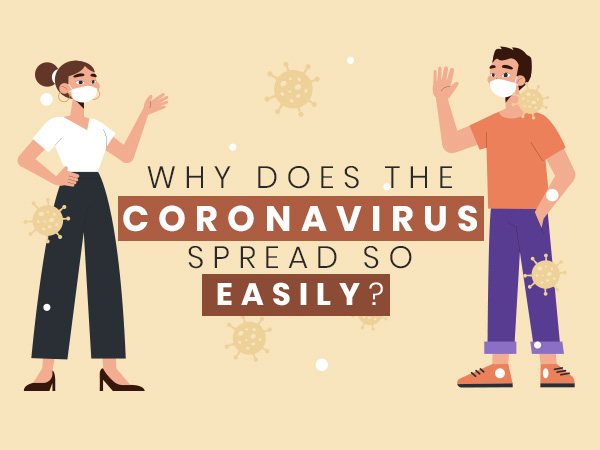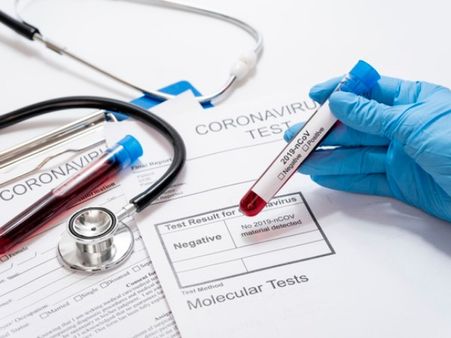Just In
- 3 hrs ago

- 6 hrs ago

- 8 hrs ago

- 10 hrs ago

Don't Miss
- Finance
 SpiceJet Faces Turbulence As 3 Lessors Move NCLT Alleging Default Worth Rs 77 Crore
SpiceJet Faces Turbulence As 3 Lessors Move NCLT Alleging Default Worth Rs 77 Crore - Sports
 Jude Bellingham: Real Madrid Star awaits first El Clasico at Santiago Bernabeu
Jude Bellingham: Real Madrid Star awaits first El Clasico at Santiago Bernabeu - News
 'False': ECI Tells SC On Reports Of EVMs Showing One Extra Vote During Mock Poll In Kerala
'False': ECI Tells SC On Reports Of EVMs Showing One Extra Vote During Mock Poll In Kerala - Movies
 LSD 2 New Song: Turn Up The Volumes As 'Gandi Taal' Song from Love Sex Aur Dhokha 2 Is Out Now
LSD 2 New Song: Turn Up The Volumes As 'Gandi Taal' Song from Love Sex Aur Dhokha 2 Is Out Now - Technology
 Apple’s iPhone 17 Plus Could Sport a Smaller Display Compared to iPhone 15 Plus
Apple’s iPhone 17 Plus Could Sport a Smaller Display Compared to iPhone 15 Plus - Travel
Telangana's Waterfall: A Serene Escape Into Nature's Marvels
- Education
 PSEB Class 10 Result 2024 Declared
PSEB Class 10 Result 2024 Declared - Automobiles
 The Rezvani Retro RR1 Is A Modified Porsche 911 Done Right
The Rezvani Retro RR1 Is A Modified Porsche 911 Done Right
COVID-19: How Does Coronavirus Spread Quickly And Attack Human Cells Easily?
Since the initial report in China in 2019, the COVID-19 virus has spread around the world. By January, new cases in Thailand, Japan, China, South Korea, Taiwan and the US were reported. Which then stretched out to Pakistan, Brazil, Georgia, Greece, North Macedonia, Norway, Romania, India and several other countries - with new cases reported in Dominica, Grenada, Mozambique and Syria by March [1].

Few countries have been marked safe from the COVID-19 pandemic, where there have been no reported cases and they are Tajikistan and Turkmenistan in Asia, Lesotho and Comoros in Africa and Oceania [2].
Studies and reports state that SARS-CoV-2 is one amongst the most rapidly spreading virus, which has caused 4,181,218 cases worldwide [3]. Although SARS-CoV, which caused the SARS outbreak has similarities to SARS-CoV-2, the COVID-19 virus is spreading much faster [4]. In 2003, 8,098 SARS cases, with 774 deaths, occurred within 8 months - whereas real-time reports of the COVID-19 pandemic clearly shows the fast-paced movement of the virus [5].
Once the coronavirus enters the human body, it immediately starts attacking the cells, where they enter host cells and reproduce and spread to new cells around the body. Let's take a look as to why and how the novel coronavirus spreads so easily within the body, once you come in contact.


So Why & How Does The COVID-19 Spread Easily?
Extensive studies on the dispersing nature of the coronavirus explored the nature of the virus from different angles where the microscopic structure of the virus was looked into to understand its attachment nature to the human cells upon contact [6]. Genetic studies and reports link the following aspects to the easy spread of the virus.
High binding levels: Reports point out that the structure of the coronavirus allows it to bind to the human body or cells at least 10 times more than the other viruses. This is because the spike protein (used to bind to the membrane of the human cells) in the new coronavirus contains a site that recognizes and becomes activated when in contact with an enzyme called furin [7].
Attraction to furin: Furin is a host-cell enzyme in the liver, the lungs, and the small intestines [8]. So, with furin being present in our body, it becomes easier for the virus to attack the organs. It was recently that researchers discovered the link between furin and SARS-CoV-2 spike proteins, which could explain the disease-causing nature of the coronavirus [9][10].

Human cells contain vulnerable elements: In addition to the furin activation process and spike proteins, it has been pointed out that our cells - the human body cells contain elements that make it vulnerable to the new coronavirus [11]. Studies point out the angiotensin-converting enzyme 2 or ACE2 human cells allows SARS-CoV-2 to infect human cells [12][13]. Also, the coronavirus has a high attraction to ACE2 - thereby binding more to the human cells than any other virus.

Researchers Link Transmission Nature To Vaccine Development
Studying the contributing factors of the easy transmission of the virus have allowed the researchers to gather an idea of developing vaccines that would help target and block the COVID-19 virus [14].
Understanding the role of furin has helped in putting forth the notion that furin inhibitors may be a valid therapeutic method for preventing SARS-CoV-2 [15]. Furin inhibitors are medicines used in the treatment of controlling furin activity and treat inflammatory and infectious diseases [16].
Another possible idea for vaccine and treatment development was blocking ACE2 receptors as may help top the coronavirus from penetrating the cells [17]. A study showed that antibodies from four mice that had been immunised against SARS-CoV had aided in reducing infection that contained SARS-CoV-2's spike proteins [18].


On A Final Note…
In conclusion, factors such as binding levels, attraction to the furin enzyme and presence of ACE2 (enzyme) causes the easy and quick spread of the coronavirus. These structural features of the SARS-CoV-2 virus allow it to attack human cells and spread so efficiently within the body.
-
 disorders cureIndia May See A Covid Surge In January, Next 40 Days Crucial; Here Is How To Protect Yourself From COVID-19
disorders cureIndia May See A Covid Surge In January, Next 40 Days Crucial; Here Is How To Protect Yourself From COVID-19 -
 disorders cureCOVID Can Trigger Parkinson's Disease: Study
disorders cureCOVID Can Trigger Parkinson's Disease: Study -
 disorders cureCommon COVID Symptoms In Fully Vaccinated Individuals: What You Should Know
disorders cureCommon COVID Symptoms In Fully Vaccinated Individuals: What You Should Know -
 wellnessMild COVID Linked To Life-Threatening Blood Clots, Increased Risk Of Cardiovascular Disease; Study
wellnessMild COVID Linked To Life-Threatening Blood Clots, Increased Risk Of Cardiovascular Disease; Study -
 wellnessCOVID-19 Variants In India: New COVID Variant May Pose Threat To Elderly People
wellnessCOVID-19 Variants In India: New COVID Variant May Pose Threat To Elderly People -
 basicsCovid-19 Linked To Early Onset Of Periods: What You Need To Know
basicsCovid-19 Linked To Early Onset Of Periods: What You Need To Know -
 wellnessCOVID XBB Variants Of Omicron In India: What You Should Know
wellnessCOVID XBB Variants Of Omicron In India: What You Should Know -
 disorders cureNew Omicron Subvariant BQ.1 Detected In Maharashtra: What You Should Know
disorders cureNew Omicron Subvariant BQ.1 Detected In Maharashtra: What You Should Know -
 disorders cureOmicron BF.7 In India, Risk Of Fresh Wave During Diwali: What You Should Know
disorders cureOmicron BF.7 In India, Risk Of Fresh Wave During Diwali: What You Should Know -
 womenPriyanka Chopra Speaks On Climate Change, COVID, Poverty At The UN Sustainable Development Goals 2022 Moment
womenPriyanka Chopra Speaks On Climate Change, COVID, Poverty At The UN Sustainable Development Goals 2022 Moment -
 wellnessCoronavirus Residues Might Be Causing Long COVID: New Study
wellnessCoronavirus Residues Might Be Causing Long COVID: New Study -
 art cultureRenowned Spanish Author Javier Marias Passes Away Due To Lung Infection Post COVID-19
art cultureRenowned Spanish Author Javier Marias Passes Away Due To Lung Infection Post COVID-19


 Click it and Unblock the Notifications
Click it and Unblock the Notifications




